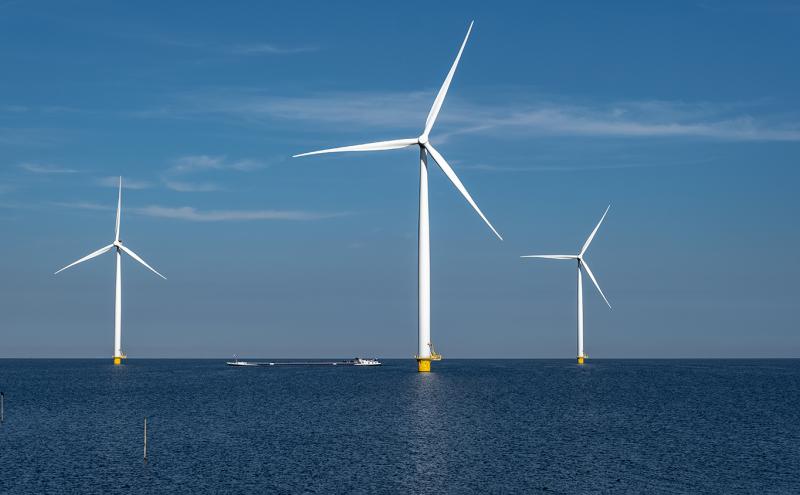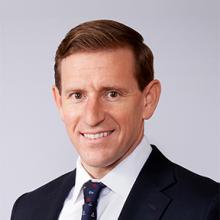
At the Port of Seattle, we need to constantly evaluate how technology, culture, consumer demand, and the impacts of climate change will alter our businesses. For the first time in nearly 50 years, the Port of Seattle has an opportunity to be in the energy business. In the mid 70s, the Port served as an essential link in the supply chain for the construction of the Trans Alaska Pipeline. Since then, energy has not been a major component of our maritime business portfolio. However, the advent of the Green Energy Economy presents a new opportunity for the Port of Seattle.
The Port stands in a unique position to provide support services and supply chain connections for offshore wind development on the West Coast, regardless of where the first turbines will be spinning. While there may eventually be a wind farm off the coast of Washington, projects in California and Oregon will need facilities up and down the West Coast to meet aggressive timelines.
The following Op-Ed, co-authored with Brandon Burke, which appeared in The Seattle Times on November 22, 2021 and reprinted below, highlights some of those opportunities.
Also, here is a link to the newest episode of the Business Network for Offshore Wind (the Network)’s Offshore Wind Insider podcast, Washington State’s Unique Opportunity in Offshore Wind. It was released on November 24, 2021, a day before Thanksgiving, so highlighting it for visibility. It features local experts Jennifer States (Washington Maritime Blue) and Brian Young (Washington State Department of Commerce), and me (Port of Seattle). You can also find it on Spotify or the Apple podcasts app.
______________________________________________________
By Ryan Calkins and Brandon Burke
Special to The SeattleTimes
A new industry is emerging in the U.S. that promises to reduce our dependence on fossil fuels and create stable, living-wage careers, and Washington state has a prime opportunity to lead. A delegation of leaders in offshore wind energy recently came to Washington state to assess opportunities for local manufacturing and production.
Washingtonians are committed to building a green economy, to spur an equitable recovery, improve our health, and address climate change. To get there we will need massive increases in renewable, sustainably produced electricity. We are fortunate that our hydroelectric dams have historically provided a steady and predictable supply of needed electricity. However, hydro is not unlimited. The combined output of all U.S. hydroelectric plants has declined 14% over the past 12 months. In Washington and Oregon, hydroelectric generation in March and April was 10% below the 10-year range. There are currently no proposals to construct additional dams, and policymakers are now considering whether some existing dams — in Washington and neighboring states — do more harm than good.
Offshore wind could provide urgently needed additional sources for sustainable, clean electricity to fully electrify home heating, retail and office spaces, cars and other modes of transportation. Offshore wind projects along the East Coast and across the globe are surging ahead as states and countries seek to capitalize on the industry’s tremendous job creation potential and massive clean energy opportunity. Offshore wind is now a national industry in the United States, and the West Coast is primed for growth. During 2021, California and Oregon each passed legislation laying the groundwork for their respective state-level offshore wind programs.
A proposal by the Quinault Indian Nation calls for a significant offshore wind project in federal waters off Grays Harbor, creating stable employment for the local community and a long-term source of electricity.
Washington’s existing advantages, if leveraged to their full strategic potential, could make the state an offshore wind powerhouse. Washington has existing deep-water ports with few height restrictions limiting the transport of large turbines. Many of these ports have excellent overland connections, and compared with Oregon and California, Washington ports will require less costly infrastructure improvements to serve offshore wind project needs. Finally, Washington has large existing manufacturing bases and a skilled workforce.
Together, these present Washington with a once-in-a-generation opportunity to emerge as a global hub for advanced manufacturing for floating offshore wind turbines.
Washington’s clean-tech sector already employs nearly 57,000 workers, and Gov. Jay Inslee and the Legislature have shown a commitment to investing in clean-tech research and development, energy innovation, and supporting existing clean-tech businesses. This includes initiatives like the state’s Department of Commerce’s Clean Energy Fund, and adoption this year of a low carbon fuel standard to incentivize clean-energy production.
West Coast collaboration can yield benefits faster than competition. Washington leaders must cultivate closer cooperation with California, Oregon, and Hawaii to champion the entire U.S. Pacific as an attractive regional market for offshore wind. The West Coast states will be entering a fiercely competitive global market from a lagging position. Regional collaboration would push the U.S. Pacific offshore wind market opportunity to the front of the crowded global stage.
Locally, Washington leaders returning from Glasgow will be deliberating over renewable energy policies and technologies that could achieve the goals agreed to at COP26. Since offshore wind is promising, it’s time to convene leaders from tribes, fisheries, utilities, labor, industry, and government to advance the offshore wind industry in Washington in a manner that accommodates ocean commerce, minimizes impacts to the environment and creates new careers in the green economy. Early engagement of key partners in the ocean economy — from San Diego to Dutch Harbor — would minimize impacts on our sustainable fisheries and maritime preserves.
Offshore wind should be seen for what it is: An opportunity for Washington to lead on its history of environmental stewardship and climate leadership, emerge as a global leader in advanced manufacturing for a cutting-edge energy technology, and create good-paying jobs. The Legislature should follow California and Oregon to streamline cooperation with utilities and demonstrate our business-friendly environment. Washington must act quickly to position itself as a hub of the offshore wind industry as national and international competitors rush to meet this global need.
Ryan Calkins is a Port of Seattle Commissioner and works at Ventures, a nonprofit organization that supports low-income entrepreneurs to start and grow their businesses in the Puget Sound area.
Brandon Burke is the vice president of policy and regulatory engagement at the Business Network for Offshore Wind, the only non-profit in the U.S. solely focused on developing the offshore wind industry and its supply chain.


